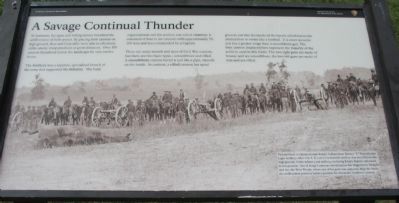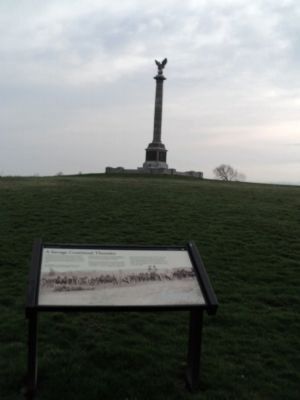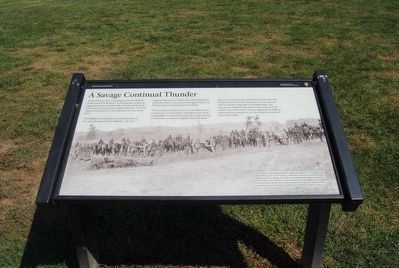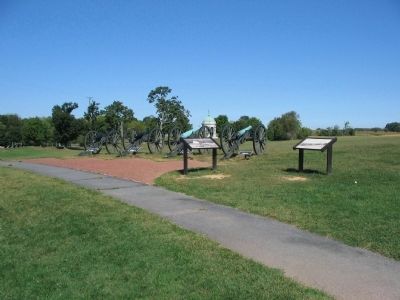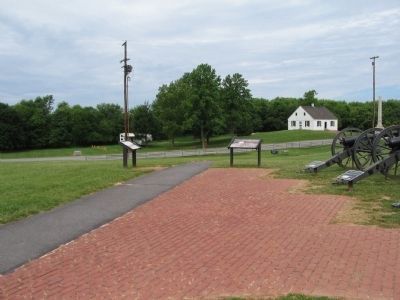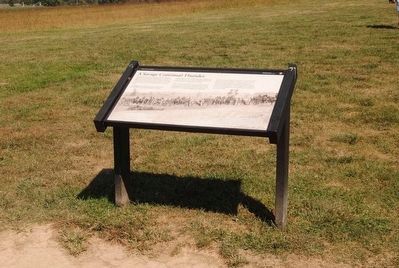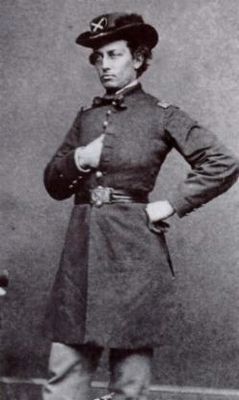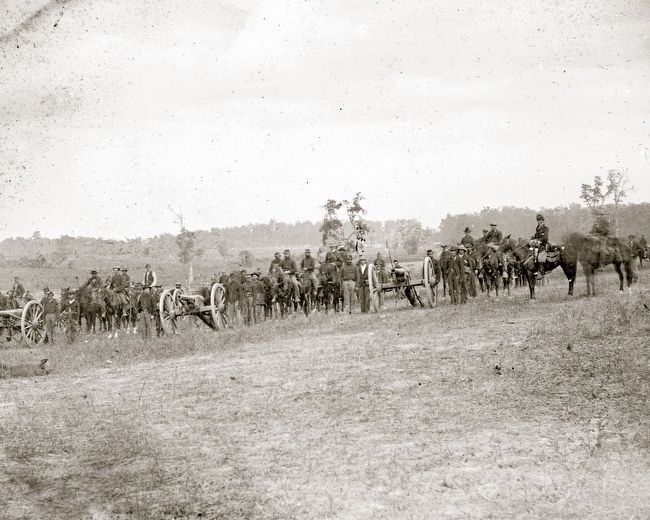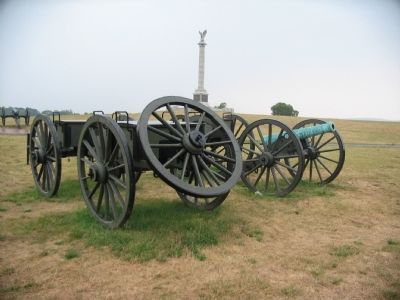Near Sharpsburg in Washington County, Maryland — The American Northeast (Mid-Atlantic)
A Savage Continual Thunder
At Antietam, the open and rolling terrain benefited the artillerymen of both armies. By placing their cannon on high ground, Blue and Gray alike were able to effectively strike enemy troop positions at great distances. Over 500 cannon thundered across the landscape for over twelve hours.
The Artillery was a separate, specialized branch of the army that supported the infantry. The basic organizational unit for artillery was called a battery. It consisted of four to six cannons with approximately 70-100 men and was commanded by a Captain.
There are many models and sizes of Civil War cannon, but there are two basic types - smoothbore and rifled. A smoothbore cannon barrel is just like a pipe, smooth on the inside. In contrast, a rifled cannon has spiral grooves cut into the inside of the barrel, which forces the ammunition to rotate like a football. It is more accurate and has a greater range than a smoothbore gun. The four cannon displayed here represent the majority of the artillery used in this battle. The two right guns are made of bronze and are smoothbore, the two left guns are made of iron and are rifled.
Erected 2009 by Antietam National Battlefield - National Park Service - U.S. Department of the Interior.
Topics. This historical marker is listed in this topic list: War, US Civil . A significant historical date for this entry is September 17, 1862.
Location. 39° 28.488′ N, 77° 44.728′ W. Marker is near Sharpsburg, Maryland, in Washington County. Marker is on Dunker Church Road / Old Hagerstown Pike, on the right when traveling north. Located at an artillery display just to the north of the Antietam National Battlefield Park Visitors Center. Touch for map. Marker is in this post office area: Sharpsburg MD 21782, United States of America. Touch for directions.
Other nearby markers. At least 10 other markers are within walking distance of this marker. A Converging Storm of Iron (here, next to this marker); Model 1841 6-Pounder Gun (here, next to this marker); Model 1857 12-Pounder Gun-Howitzer (here, next to this marker); Lee’s Artillery Battalion (here, next to this marker); 3-Inch Ordnance Rifle (a few steps from this marker); 10-Pounder Parrott Rifle (a few steps from this marker); “Load” “Commence Firing” (a few steps from this marker); “I Hate Cannons” (a few steps from this marker); Twentieth Regiment (within shouting distance of this marker); New York State Monument (within shouting distance of this marker). Touch for a list and map of all markers in Sharpsburg.
More about this marker. The background of the marker is a wartime photo of a battery deployed for action. Pictured here is Captain Joseph Knap's Independent Battery "E" Pennsylvania Light Artillery. After Col. S.D. Lee's Confederate artillery
was forced from this high ground, Union infantry and artillery, including Knap's Battery, advanced to this position. Two of Knap's cannons moved across the Hagerstown Turnpike and into the West Woods, where one of his guns was captured. After the battle, the artillerymen posed in battery position for Alexander Gardner's camera.
Related marker. Click here for another marker that is related to this marker. This marker replaced a previous one titled "Load, Commence Firing."
Also see . . .
1. Antietam Battlefield. National Park Service site. (Submitted on July 6, 2009, by Craig Swain of Leesburg, Virginia.)
2. Smoothbare. A smoothbore weapon is one which has a barrel without rifling. Smoothbores range from handheld firearms to powerful tank guns and large artillery mortars. The majority of shotguns are smoothbores and the term can be synonymous. (Submitted on October 15, 2015, by Brian Scott of Anderson, South Carolina.)
3. Rifling. Rifling consists of helical grooves in the barrel of a gun or firearm, which imparts a spin to a projectile around its long axis. This spin serves to gyroscopically stabilize the projectile, improving its aerodynamic stability and accuracy. (Submitted on October 15, 2015, by Brian Scott of Anderson, South Carolina.)
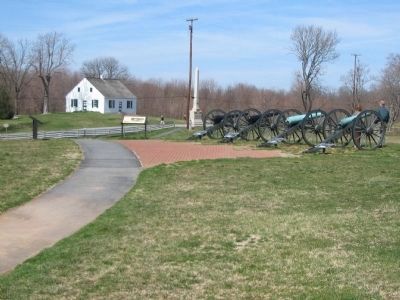
Photographed By Craig Swain
9. Set of Interpretive Markers near the Artillery Display
The artillery display includes examples of common weapons used during the Civil War. The four in frame, from left to right, are a 3-inch Parrott Rifle Model 1863, a 3-inch Ordnance Rifle Model 1861, a 12-pounder Field Gun Model 1857 "Napoleon", and a 6-pounder Field Gun Model 1841.
Credits. This page was last revised on April 1, 2022. It was originally submitted on July 6, 2009, by Craig Swain of Leesburg, Virginia. This page has been viewed 1,107 times since then and 17 times this year. Photos: 1. submitted on July 6, 2009, by Craig Swain of Leesburg, Virginia. 2. submitted on April 15, 2011, by Bill Coughlin of Woodland Park, New Jersey. 3. submitted on October 15, 2015, by Brian Scott of Anderson, South Carolina. 4. submitted on September 21, 2009, by Craig Swain of Leesburg, Virginia. 5. submitted on July 5, 2009, by Craig Swain of Leesburg, Virginia. 6, 7, 8. submitted on October 15, 2015, by Brian Scott of Anderson, South Carolina. 9. submitted on April 3, 2008, by Craig Swain of Leesburg, Virginia. 10. submitted on March 18, 2008, by Craig Swain of Leesburg, Virginia.
